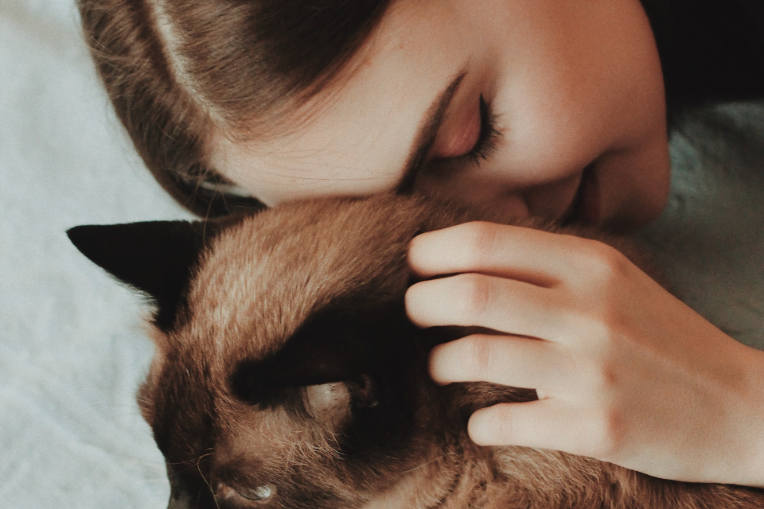Cats Fighting
How to Introduce Cats Cat Hissing
Cat Behavior Clinic
Schedule with Cat Behaviorist and New York Times Acclaimed Feline Behavior Science Author, Mieshelle Nagelschneider.

Mieshelle’s Scholarly-cited Cat Behavior Book is Text Book Curriculum to Certify Other Cat Behaviorists and Help Them Understand the Different Forms of Cat Aggression.
Cats Fighting
In practice 33 years and founders of the “cat behaviorist” specialty, the doctor and Oxford-trained cat behaviorist show you how to prevent your cats from fighting, or how to stop cat fights once they’ve begun. A cat attack can be dangerous, whether from the cat’s bite, the cat’s scratching, or the danger of infection. The clinic has a high success rate because the latest scientific research is incorporated into the behavior plans instead of antiquated book/internet tips and tricks (i.e. we don’t recommend you feed your cats near each other as part of the integration process). We have more cats purring than anyone.
In Your Aggressive Cat Behavior Consultations
You’ll Learn Strategies Rooted in Cat Psychology:
- how to create an environment that decreases or eliminates territorial thinking that leads to hostility between cats (this is a big one that most behaviorists leave out). Do your cats have a social hierarchy established or are they like roommates living in captivity together?
- The importance of gene-encoded behavior and the cat instinctual brain when integrating cats
- Why cats that were once best of friends, are now fighting with each other and higher-level behavior strategies to re-integrate them
- learn the Nagelschneider Method from scienced-based research on natural affiliative cat behavior in domestic cats. This social method based on wild felid behavior is proven to improve any cat to cat aggression issue
- how to prevent cats from fighting through informed selection, socialization, and training of new kittens
- why punishment and reprimands don’t work, could make aggression worse or cause new behavior issues, and will ruin the bond between yourself and your cat
- how to apply non-aversive and positive behavior modification methods to eliminate or manage aggressive behaviors
- how to rule out possible medical causes — and cure the behavioral issue even after the medical cause has been treated
- how to identify which form of aggression your cat is exhibiting: play, predatory, maternal, or petting-induced; or territorial, sexual, or pain-induced; or the little-understood but most common redirected aggression
- how to stop unwittingly rewarding or even causing aggressive behavior
- learn why treating the symptom (aggression) of the bigger problem (intercat social issues, inappropriate and natural predatory aggression, or fear-based aggression) will get you nowhere.


“I just wanted to give you an update on the progress of Oreo. He is doing great!!!! He seems to be getting better every day. They are now living peacefully amongst themselves. There is no more hissing and screaming. Thanks for all your help – you have been a lifesaver!!!”
Kerry and the cats
Florida
“I just wanted to let you know that there has been a complete turn around with my cats behavior. They are now the best of friends, Saki used to brutally attack Rosey before, and now they sleep together on the same chair, play together, I have even caught them eating out of the same food bowl. Thanks for your help!”
Krista
Vancouver, B.C.
Excerpt from Mieshelle’s New York Times Acclaimed Feline Behavior Science book,
The Cat Whisperer, on Intercat Social Issues
Reintroductions and the Nagelschneider Method
If your existing cats are in an intractable pattern of aggression, you’ll need to perform are introduction, along with the rest of the C.A.T. Plan from Chapter 7. Just follow the instructions for introducing Newcat and Homecat—with a few differences. Reintroductions, unlike first-time introductions, will almost always take place between only two cats. Also, reintroductions will always feature a barrier between the unfriendly cats; first-time introductions will not include such a barrier unless one or both cats prove to have persistent difficulty relaxing around each other. My own reintroduction process is called the Nagelschneider Method.
First Impressions: Desensitization, Habituation, and counterconditioning

Read just some of our testimonials from 1999 to 2024 for solved feline aggression issues on our review page. Are you ready for help that will last the life of your cats? Book a consultation now.
Stop feeding your cats on opposite sides of a baby gate! The process of desensitization will involve slowly and gradually exposing each cat to the sight, sound, and, especially, smell of the other cat—always making sure that the stimulus presented is below the cat’s fear threshold.
Habituation will happen when each cat becomes acclimated to the once-novel stimulus of the other and they appear either enthusiastic about each other, or indifferent to or bored by each other. At the end of the introduction or reintroduction process, your cats may get along famously. But if, during or after the desensitization and habituation, your cats seem like they could not care less about one another, you will still have achieved wild success—and that may be just the beginning of the good news.
We’ll also use counterconditioning on the cats by pairing desirable activities, such as playing or eating, with the smell, sound, or sight of the other cat. Play will be a very important tool in this process. Keeping a cat in an animated state of play prevents him from feeling fear, for cats simply cannot engage in play behaviors and feel fear at the same time. Food and treats given outside of normal feeding times will also play a big role. Be sure to break any treats up into smaller pieces so that you don’t treat your cats so much as to interfere with their normal nutrition.
In an attempt to capture at least some of the many permutations of events that could occur during an introduction, these instructions are highly detailed. Most owners will not require all the detail. But for some owners, there may not be enough detail. If you are in that minority—your cats are reacting negatively or not getting along no matter which suggestions you try, and you can’t figure out what to do next—it may be time to go to www.thecatbehaviorclinic.com or your nearest search engine and look up an experienced and certified cat behaviorist to walk you through the process dynamically, by phone or in person.
Think You’ve Tried Everything to Help Your Cat? We’re Pretty Sure You Haven’t
Applying the sciences of genetics, animal psychology, feline learning and memory and evolutionary biology to effectively correct your cat’s behavior long term.
Frequently Asked Questions
All cat behavior solutions must take into consideration feline instincts and their evolutionary biology. The clinic has exclusive rights to Mieshelle Nagelschneider’s proprietary Cat Whisperer™ consulting, easy-to-implement C.A.T. Plan™ positive behavior modification, the most effective, comprehensive, and up-to-date system for curing any cat behavior problem.
Because every cat and environment is different, the plan allows for customized behavior techniques and environmental changes when needed – because cat behavior is not one-size-fits-all. Mieshelle has spent 20 years developing a method so effective that when clients follow it, their success rate is well over 90% (even higher for the most common issues).
Her science-based cat behavior book, The Cat Whisperer, has been featured in the New York Times and a best-seller on Amazon and published in 4 languages (Random House Publishing with co-writer Cameron Powell).
For cat behaviorists seeking certification, her book is a required curriculum by a number of cat behaviorist certifying organizations.
Love is born of mystery, and our cats are mysterious and loved in equal measure. But sometimes the greatest blessing of all is a bit of light thrown into a dark place. Mieshelle Nagelschneider holds that light. Allow her to share it with you.”– Gwen Cooper Author, Homer’s Odyssey: A Fearless Feline Tale, of Life With a Blind Wonder Cat (Random House), New York, NY
Veterinarian: “Over the course of many years, Mieshelle has developed and refined her unique ability to think like a cat. On numerous occasions I have witnessed the life-changing benefits Mieshelle’s techniques can bring to cats and their sometimes very frustrated owners.” – Veterinarian, Dr. James R. Shultz DVM, Portland, Oregon
Cat Behavior Veterinarian Referral from Dr. Lisa Berger DVM: “Despite all the disruptions, there have been no incidents of urination on the bed or the couch, and neither have been covered by plastic all week!” – Juanita H. Portland, Oregon
You have the African wildcat, your domestic cat’s ancestor, to thank for many of your cat’s “unwanted” cat behaviors. Learn more about this during your consultation to better understand and help your cat and solve its behavior issues. We often misunderstand cat behaviors. Once cat owners understand their cat instincts and biology, they can better understand why the behavior strategies work so well and can better apply them.
Mieshelle The Cat Whisperer™ has been the spokesperson and cat behavior expert for Comfort Zone, Arm & Hammer Cat Litter, and Cat Expert for Whiska’s International Media Tour Australia. Her cat behavior expertise is seen in the New York Times, The Today Show, NBC Dateline, MTV, Animal Planet, National Geographic, Discovery Channel, The Hallmark Channel, Modern Cat Magazine, Parade, Reader’s Digest, Cat Fancy Magazine, The New York Post, The Boston Globe, USA Today, This Wild Life, The Divine Cat, Real Simple Magazine, Salon.com, Petside, Freekibblekat, The Toronto Star, Canada Globe and Mail, Animal Rescue Site, The Daily Cat, Feline Wellness Magazine, Advisory Council Pet360.com, This Wild Life, The Cat Channel, Pets Magazine, The Circle, New Republic, The Sunrise Show, Yahoo.com, Herald Sun, Toronto Star, and countless others. See our Media Room below for the latest.
Feline behavior therapy is very different from canine behavior therapy and the approach to changing a cat’s behavior is even more unique. Cats do not display obedience problems like dogs. The help you need is not focused on physical or verbal behavior modification strategies, like dog training with a dog trainer present. All cat behaviorists conduct consultations by phone or video via Skype. Our behavior plans are specific to cats and still allow for the natural feline instincts, but when and where you want them displayed. We will cover the behavior plan during the phone or video consultation and offer follow-up over the course of several weeks for all of our consultation programs.
Call The Clinic Today at 503-267-8888


